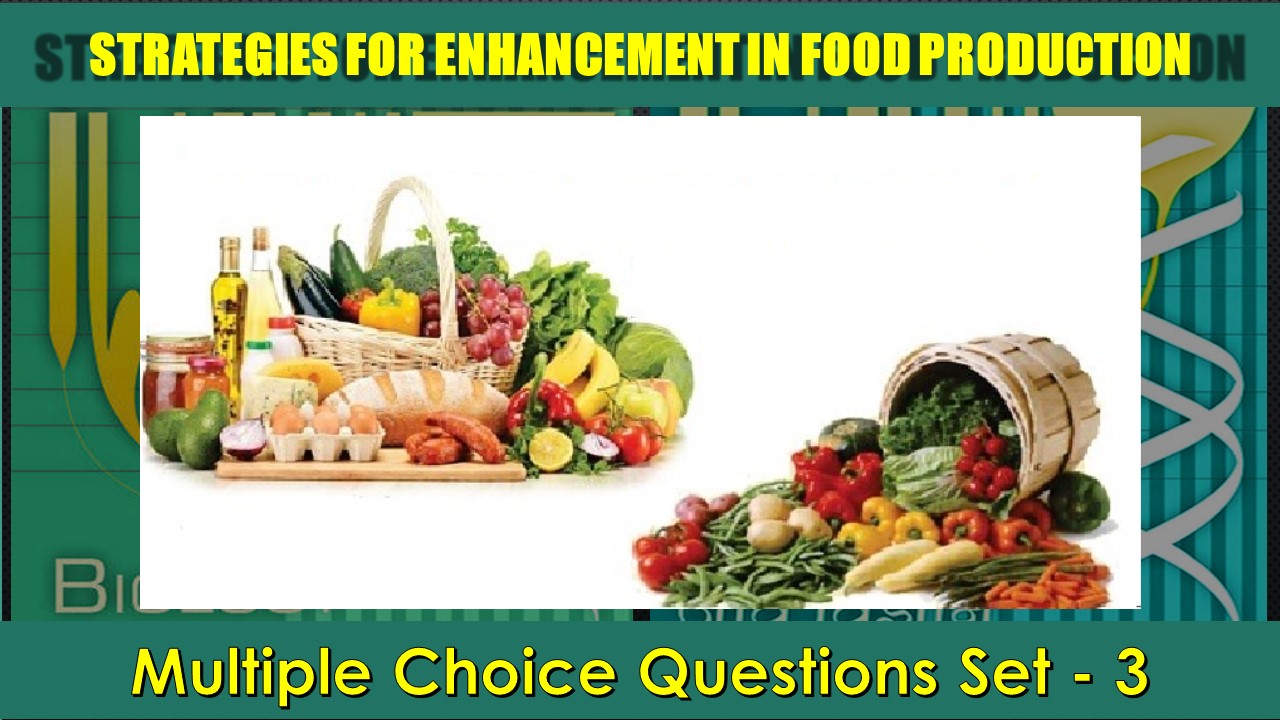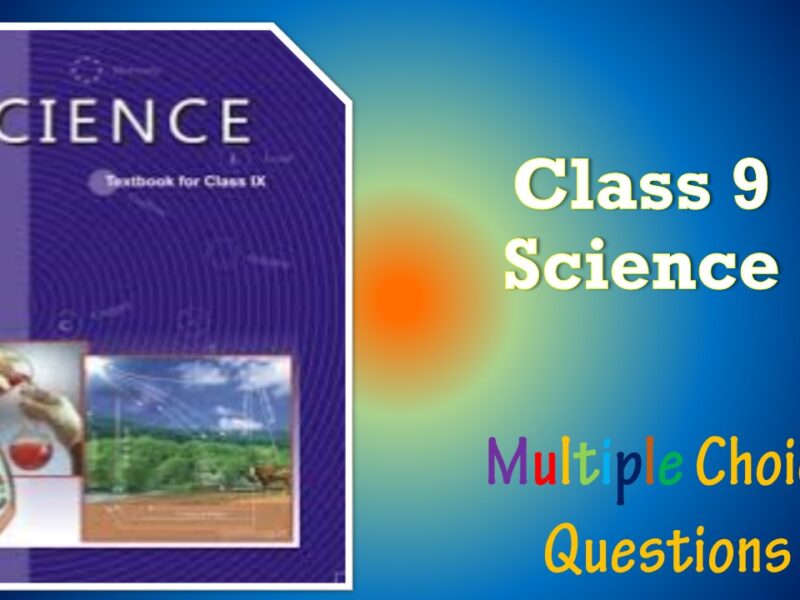CBSE Class 12 Strategies for Enhancement in Food Production Multiple Choice Questions with Answers. MCQ Questions Class 12 Strategies for Enhancement in Food Production with Answers Is Prepared Based on Latest Exam Pattern. Students can solve NCERT MCQ questions Class 12 Strategies for Enhancement in Food Production with Answers to know their preparation level.
Students who are searching for NCERT MCQ Questions Class 12 Strategies for Enhancement in Food Production with Answers are compiled here to get good practice on all fundamentals. Know your preparation level on MCQ Questions for Class 12 Strategies for Enhancement in Food Production with Answers. You can also verify your answers from the provided MCQ Class 12 Strategies for Enhancement in Food Production with Answers. So, ace up your preparation with MCQ of Class 12 Biology Examinations.
MCQ Questions Class 12 Strategies for Enhancement in Food Production with Answers - Set - 3
Question 1:
Hybrid vagour is induced by:
(a) By Clonal selection
(b) By Crossing of plant
(c) By crossing of two plants
(d) By Species differentiation
Correct Answer – (C)
Question 2:
Triticale first main-made corral crop has been obtained by crossing wheat with
(a) Rye
(b) Pearl mille
(c) Sugarcane
(d) Barley
Correct Answer – (A)
Question 3:
The technique of obtaining large number of plantlets by tissue culture method is called :
(a) Organ culture
(b) Micro-propagation
(c) Macro-propagation
(d) Plantlet culture
Correct Answer – (B)
Question 4:
One of the following is a disease of poultry:
(a) Anthrax
(b) Pebrine disease
(c) Ranikhet disease
(d) Foot and mouth disease
Correct Answer – (C)
Question 5:
Somatic hybridization can be done by:
(a) By Protoplast fusion
(b) By Haploid anther
(c) By Cell culture
(d) By Totipotency
Correct Answer – (A)
MCQ Questions Class 12 Strategies for Enhancement in Food Production With Answers
Question 6:
Most nutritious among the following is:
(a) What
(b) Maize
(c) Pearley
(d) Rice
Correct Answer – (C)
Question 7:
Most cultivated plants are:
(a) Autopolyploid
(b) Allopolyploid
(c) Aneuploids
(d) Haploids
Correct Answer – (B)
Question 8:
Choose the cat fish from the following:
(a) Katla Katla
(b) Wallage attu
(c) Labeo rohita
(d) Cirrhinus mrigaja
Correct Answer – (B)
Question 9:
India’s w heat yield revolution in the 1986s was possible primarily due to:
(a) Mutations resulting in the plant height reduction
(b) Quantitative trait mutations
(c) Hybrid seeds
(d) Increased chlorophyll content
Correct Answer – (C)
Question 10:
Both in callus and suspension culture commonly used auxin is:
(a) NAA
(b) IEA
(c) 2-4D
(d) Abscisic acid
Correct Answer – (C)
- NCERT Solutions Class 11 Chemistry Chapter 1 : Some Basic Concepts of Chemistry
- NCERT Solutions Class 11 Chemistry Chapter 2 : Structure Of The Atom
- NCERT Solutions Class 11 Chemistry Chapter 3 : Classification of Elements and Periodicity in Properties
- NCERT Solutions Class 11 Chemistry Chapter 4 : Chemical Bonding and Molecular Structure
- NCERT Solutions Class 11 Chemistry Chapter 5 : States of Matter
- NCERT Solutions Class 11 Chemistry Chapter 6 : Thermodynamics
- NCERT Solutions Class 11 Chemistry Chapter 7 : Equilibrium
- NCERT Solutions Class 11 Chemistry Chapter 8 : Redox Reactions
- NCERT Solutions Class 11 Chemistry Chapter 9 : Hydrogen
- NCERT Solutions Class 11 Chemistry Chapter 10 : The s-Block Elements
- NCERT Solutions Class 11 Chemistry Chapter 11 : The p-Block Elements
- NCERT Solutions Class 11 Chemistry Chapter 12 : Organic Chemistry: Some Basic Principles and Techniques
- NCERT Solutions Class 11 Chemistry Chapter 13 : Hydrocarbons
- NCERT Solutions Class 11 Chemistry Chapter 14 : Environmental Chemistry




